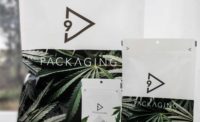Product quality has never been more top-of-mind than it is for consumers today. Therefore, products of poor quality that enter the market can cause potentially serious damage to a company’s reputation. They also can expose distributors and food manufacturers to compensation claims.
Given the visibility of recent global product recalls, the entire supply chain has come under increased public scrutiny, according to Dr. Bernd Wilke, head of engineering and technology support for Bosch Packaging Technology. Consequently, for food manufacturers, it is not just about the voluntary implementation of safety standards but about having a high level of internal quality assurance controls for producing products—and complying with changing legal regulations.
“This ensures a manufacturer´s brand protection, assures consumer satisfaction and prevents product recalls,” says Wilke. “In this context, shelf life of goods plays an important role.” Extending product shelf life through leveraging packaging machine manufacturers’ solutions is an important component of that equation.
“On the one hand, appropriate methods applied already during the packaging process ensure product quality and protection. On the other hand, a proper packaging solution contributes to high quality and safety after the packaging process.”
Properly packed: Hygiene is paying off
It goes without saying, hygiene is very important in all areas of food production, from processing and packaging machinery construction materials to integration and cleaning concerns. The European Hygienic Engineering and Design Group (EHEDG), an expert group of machinery and component manufacturers, regularly publishes guidelines on how hygienic design can be implemented. The group routinely consults with 3-A Sanitary Standards for harmonization.
“To meet the increasing demands, these organizations call for filling devices for dry food to be easy to clean, too, for instance,” adds Wilke. “The cleanability of such systems should be validated if possible.”
Tightly sealed seams for product protection
To ensure product protection during the packaging process, manufacturers offer versatile sealing technologies including hot, cold or ultrasonic sealing. One disadvantage of hot sealing technologies is the heat influence on the product.
Ultrasonic sealing offers an alternative as a “cold” technology, which can reduce product loss while preserving product protection. It also eliminates the risk of diminished seal quality and leakage due to contamination of the sealing area.
High-frequency ultrasonic vibrations remove product residues from the sealing area, thus enabling a reliable joining of surfaces. The resulting seals are secure, ensuring the product is tightly packaged. Thus, ultrasonic sealing maintains product quality during and after the packaging process.
Guaranteed product freshness—– during processing and packaging
One of the most effective methods to preserve perishable foods is the incorporation of modified atmosphere packaging (MAP) technologies. The air contained in the packaging is replaced by a gas mixture typically containing nitrogen, oxygen or carbon dioxide, depending on the product. This kind of protective packaging reduces the growth of microorganisms and extends shelf life. Packaging with protective gas maintains product quality without affecting taste, quality, consistency or nutritional content.
“Thanks to modern packaging machines which feature devices for hermetic sealing, as well as MAP technology, product quality can be preserved and the amount of added preservatives can be reduced while extending a food´s shelf life,” says Wilke. “This combination also protects brand reputation, improves customer loyalty and offers higher sales potential.”
Protection from oxygen, water and light
After the packaging process, food often must be preserved for a long time. Different products may require protection against oxygen, water or light, making the choice of the appropriate packaging material crucial.
According to Wilke, lightproof packaging material such as composites with a UV barrier or colored glass can be effective in preserving light-sensitive goods. “For water-sensitive products, steam barriers contained within the packaging material are recommended—for example, AI-metallization, polyethylene or polypropylene. Packaging materials like aluminum protect oxygen-sensitive goods from air penetrating the packaging. Every application needs the appropriate material.”
Often, harmful oxygen is already contained within the product and its packaging. Different procedures can either remove the oxygen or prevent it from entering the package. These procedures include the vacufin procedure, which generates a defined vacuum inside the package; neutrafill, a method of adding protective gas; and neutravac, a combination of both procedures.


